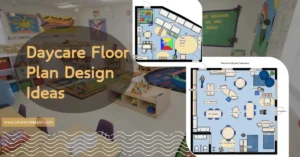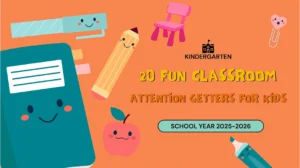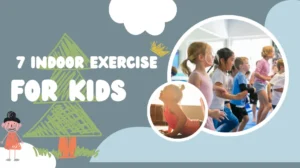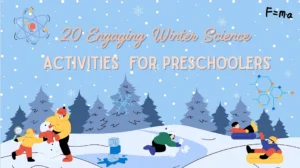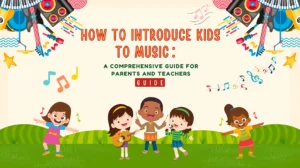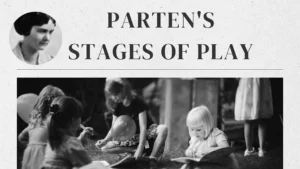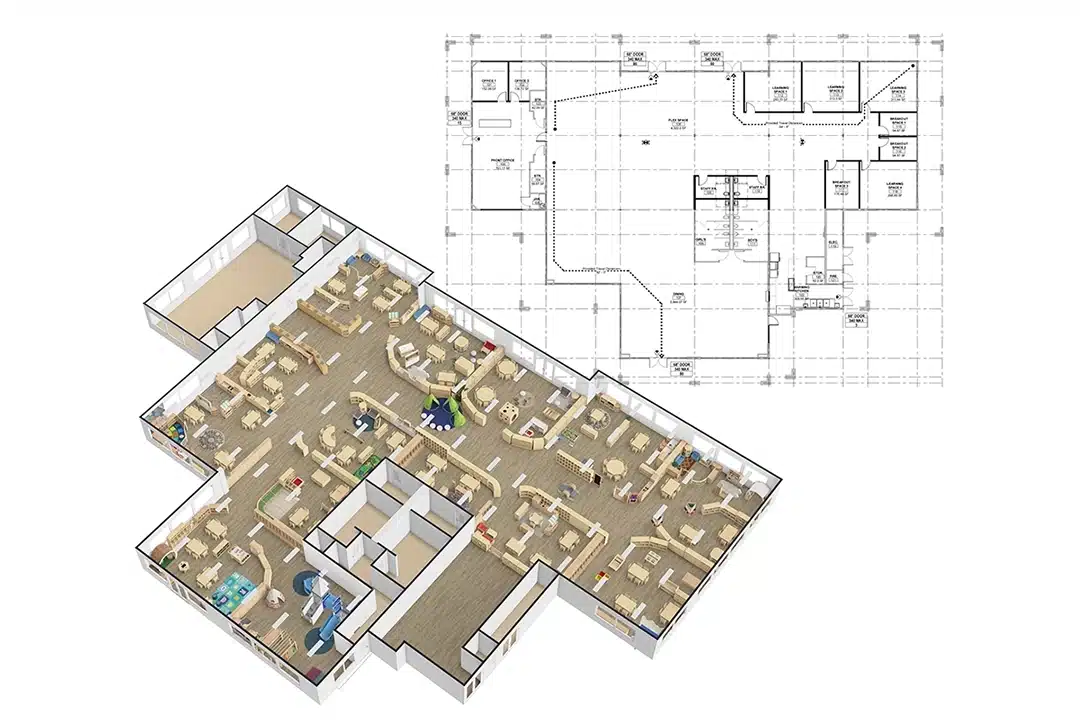Are your students constantly asking the same questions you just answered? Do your lessons feel like they’re going in one ear and out the other? Is your classroom missing that spark that turns passive listening into active learning? If any of this sounds familiar, it might be time to rethink your visual strategies—and anchor chart ideas might be the game-changer you need.
Anchor charts are more than just colorful posters—they’re powerful, interactive visuals that help children process, remember, and apply key concepts in real time. From behavior expectations to phonics patterns, right anchor chart ideas bring clarity and excitement into the classroom, creating a learning environment that’s both engaging and effective.
In this article, I’ll share 18 creative and practical anchor chart ideas that will turn your classroom into a vibrant, student-led learning hub. Whether you teach preschool, kindergarten, or early primary, these ideas are easy to implement, visually impactful, and incredibly effective. Let’s turn those blank walls into bold teaching tools!

What Is an Anchor Chart?
An anchor chart is a visual teaching tool that captures key concepts, strategies, and processes discussed during a lesson and displays them in a clear, student-friendly format. Typically made during or after a lesson, anchor charts help solidify understanding by offering a reference point that students can return to throughout their learning journey.
What sets an anchor chart apart from regular posters or decorations is its purpose-driven creation. Most charts are made with the students ‘ handwritten, colorful, and tailored to that specific classroom’s needs. This collaboration builds a sense of ownership and deepens student engagement.
Especially in early childhood education—where children rely heavily on visuals and repetition—anchor charts are crucial for supporting independence. Instead of constantly asking the teacher, a student can glance at the chart on the wall for support.
Types of Anchor Charts
Anchor charts can serve different purposes depending on what you’re teaching and what you want students to retain. By understanding the key types of anchor charts, educators can intentionally design visuals that reinforce learning, promote independence, and support classroom routines. In early childhood education, where visual reinforcement is critical, choosing the right type of anchor chart can directly impact how well children absorb and apply information.
Procedure Anchor Charts
Procedure anchor charts are designed to support classroom routines and help students remember the steps required to complete daily tasks. These charts typically outline what students need to do during transitions, activities, or classroom management scenarios. The goal is to reduce repeated instructions and promote self-directed behavior. Clear procedural charts create structure and consistency, which is especially important in early learning environments.
Strategy or Process Anchor Charts
Strategy or process anchor charts focus on the methods students can use to solve problems or complete academic tasks. These charts break down cognitive processes into manageable steps, making abstract thinking more concrete. Whether related to language development, early math, or other foundational skills, these charts provide a visual reference that encourages students to apply strategies independently and consistently during their work.
Vocabulary Anchor Charts
Vocabulary anchor charts are designed to support language development by highlighting important words and their meanings in a visual format. These charts help children familiarize themselves with new terminology through repeated exposure, which is essential for retention. Reinforcing vocabulary through anchor charts helps build language confidence, especially for early learners and multilingual students, by giving them accessible tools to understand and use new words in context.
Content-Specific Anchor Charts
Content-specific anchor charts are aligned with curriculum topics across different subjects. These charts focus on subject-related information that students need to recall, such as key concepts, facts, or structures. They serve as ongoing reference tools that help children make connections between what they’ve learned and what they are currently studying. In early education, where concrete visuals enhance abstract understanding, these charts are handy for supporting long-term retention.
Using a variety of anchor chart types ensures that different learning needs are met in the classroom. Each chart has its role, and together, they provide a multi-dimensional learning environment where students can visualize, recall, and apply information independently.
Benefits of Using Anchor Charts in the Classroom
Anchor charts are more than just colorful decorations—they are essential teaching tools that support learning, engagement, and memory. In early childhood and primary classrooms, where students are developing foundational skills and learning how to learn, anchor charts provide consistent visual reinforcement that enhances both teaching and student autonomy.
Reinforces Key Concepts
One of the most significant advantages of anchor charts is their ability to reinforce what has been taught. After a lesson, the chart remains on display, giving students a reliable point of reference. This repeated visual exposure helps children internalize the information, especially when they are still developing listening and memory skills.
Promotes Independence
Anchor charts encourage self-directed learning. Instead of asking the teacher for help every time they forget a rule, a step in a process, or the meaning of a word, students can look to the chart for guidance. Over time, this builds confidence and reduces dependency on adult direction.
Enhances Classroom Consistency
With anchor charts in place, all students receive the same clear visual cues and reminders. This consistency reduces confusion, supports routines, and sets clear expectations. Whether it’s how to participate in group work or how to start a writing assignment, anchor charts keep the classroom environment organized and predictable.
Supports Language Development
In bilingual or multilingual classrooms, anchor charts serve as essential language tools. Displaying sentence frames, key vocabulary, or phrases in context helps students build their language skills while participating in content learning. Repeated visual exposure to these structures aids in long-term language acquisition.
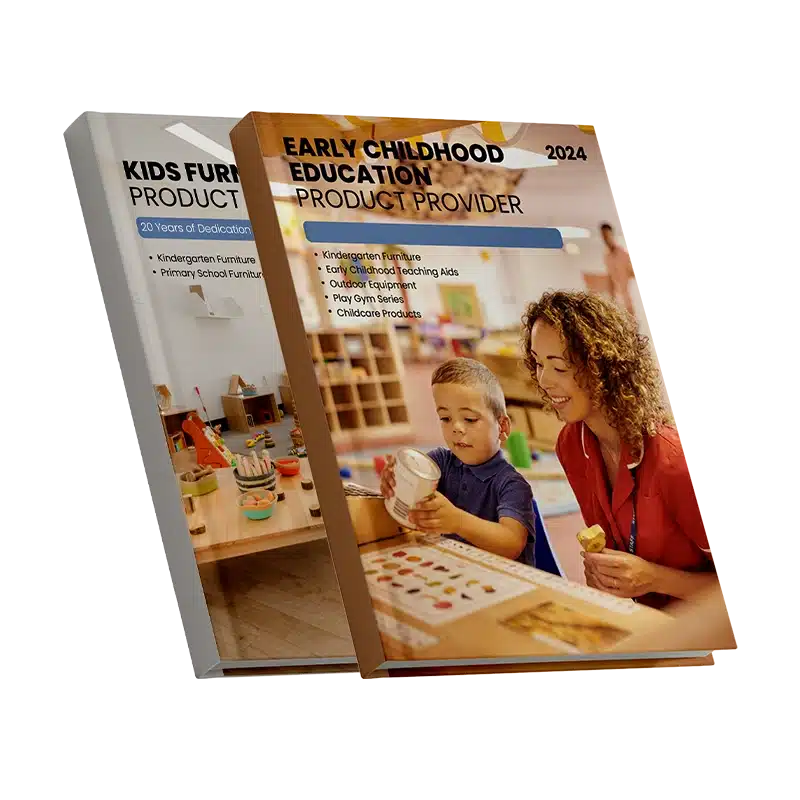
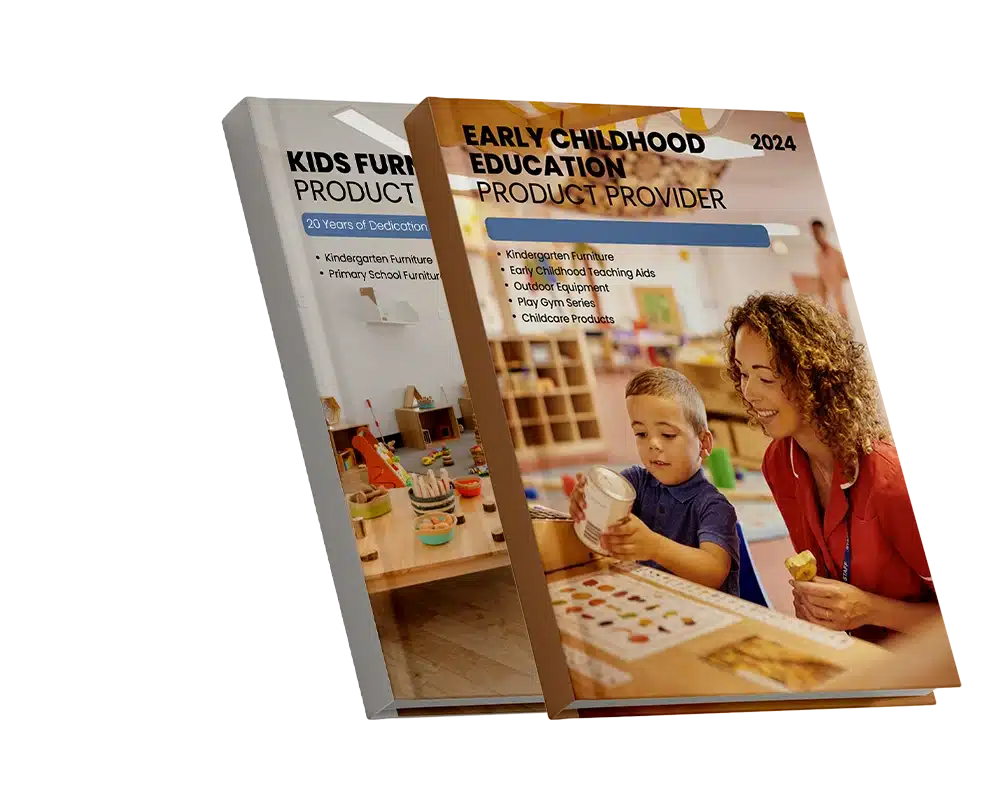
How Do You Create an Anchor Chart?
Creating an effective anchor chart is a structured process that goes beyond simply writing notes on a piece of paper. A good anchor chart is built with intention, includes student involvement, and becomes a visible, interactive part of the learning environment. In early education classrooms, particularly with kindergarten anchor charts, following a straightforward step-by-step approach ensures that your chart is not only visually appealing but also educationally impactful.
Below is a practical process you can follow to create meaningful and functional anchor charts in your classroom.
Step 1: Start with an Outline
Begin by thinking about the key points or objectives you want the anchor chart to address. This might be a process, a strategy, or a set of essential vocabulary words. Before creating anything with your students, sketch a rough layout or structure. Having a clear outline ensures the chart stays focused and purposeful, especially when addressing foundational skills in early childhood learning.
Step 2: Add a Heading
Your anchor chart needs a clear, bold title that lets students know exactly what the chart is about. Whether you’re introducing a reading strategy or displaying a daily routine, a concise heading sets the tone. For kindergarten charts, simple wording and large print make it easier for children to recognize and recall the chart’s content.
Step 3: Talk It Through with Your Students
This step is essential. Instead of presenting a finished chart, build it with your students during or after a lesson. Discuss the key ideas together and ask guiding questions to encourage participation. This collaborative process increases engagement and helps students better retain the information, especially when they’re actively contributing to what goes on the chart.
Step 4: Fill It Out
Use large, legible text and clear visuals to complete the chart in real time. Highlight the main points using bullets, short phrases, or drawings. Keep it clean and straightforward—remember, the goal is for students to use it as a quick reference. For anchor chart ideas that involve steps or sequences, consider using numbers or icons to reinforce order and meaning.
Step 5: Hang the Chart
Once completed, place the anchor chart somewhere easily visible and accessible. Position it at eye level for your students so they can see and use it without needing assistance. In classrooms that use multiple anchor charts, consider rotating them based on the lesson focus or current unit to keep the walls purposeful and uncluttered.
Step 6: Refer to the Anchor Chart
Creating the chart is only half the job. To make it truly effective, refer back to the anchor chart regularly during lessons and independent work time. Point to it when reviewing concepts, answering questions, or giving instructions. This consistent use reinforces the content and helps students form connections between the visual reference and their learning.
Following these six steps ensures that every anchor chart you create has a clear purpose, is built with student collaboration, and becomes a meaningful part of your instructional routine. Especially in classrooms using multiple anchor chart ideas throughout the year, consistency in how they’re created and utilized makes them far more valuable for student learning and engagement.
Anchor Chart Ideas
Creative and intentional anchor chart ideas are essential for turning your classroom into a living, breathing learning environment. When well-crafted, each anchor chart becomes a long-term visual guide that students refer to during lessons, independent work, and group activities. These charts aren’t just helpful—they’re foundational to learning in early education. Below are 18 anchor chart ideas, now expanded in detail, that will support your teaching across writing, reading, math, science, vocabulary, and classroom management.
Class Goals Anchor Chart
The Class Goals Anchor Chart is an excellent way to unite your classroom around shared intentions. Whether your goal is to improve listening, clean up faster, or complete a group project, this anchor chart makes your objectives visible and trackable. The chart works well when updated collaboratively with your students. Each time the class makes progress, you can add stickers, checkmarks, or even color in parts of a goal tracker. Over time, this helps build a culture of responsibility and shared effort. For younger students, especially in kindergarten, visualizing class-wide progress helps reinforce the importance of teamwork, motivation, and consistent effort.

Main Idea Summary
This anchor chart focuses on building a foundational reading comprehension skill—summarizing the main idea. It typically outlines steps such as identifying the subject, determining the most crucial point the author is making, and expressing it in one clear sentence. Over time, using this chart regularly helps students move from retelling everything to focusing on what matters most. It also supports vocabulary development, since students must understand the difference between key details and supporting examples. Among all anchor chart ideas, this one is especially effective for helping young learners internalize structure and purpose in reading.

Multiplication Anchor Chart
Designed to make multiplication less intimidating, this anchor chart introduces the concept through repeated addition, equal groups, and visual arrays. It provides a scaffold for students just beginning to move beyond simple counting. The chart might include visual examples that break down multiplication into small, understandable parts, helping learners see how multiplication is built. In classrooms where students struggle with number sense, this anchor chart creates a concrete visual model that they can revisit throughout the year. It also supports early math vocabulary and helps students link real-world concepts—like rows of chairs or sets of crayons—to math operations.

Telling Time
Understanding how to tell time is a skill that develops gradually, and a Telling Time Anchor Chart can help support this learning journey by offering constant visual cues. The chart usually features labeled analog clock faces, explanations of hour and minute hands, and color-coded sections for key terms like “half past,” “quarter to,” and “o’clock.” For many children, especially in kindergarten or lower primary, learning to read a clock can be abstract. A well-designed anchor chart gives them a reliable reference that connects new vocabulary to visual cues. It helps normalize time-telling language in the classroom, building both math fluency and time awareness.

Nouns, Verbs, and Adjectives
This anchor chart provides an overview of basic grammar terms that are essential for sentence-building. By breaking down nouns, verbs, and adjectives into definitions and examples, the chart allows students to classify words more easily in their writing and speech. It typically uses color coding or columns to keep the categories separate and easy to follow. When students have consistent access to this reference, they become more confident in identifying parts of speech and using them correctly. Among all kindergarten anchor charts, this one is beneficial for reinforcing foundational grammar and boosting writing confidence.

I’m Fiiiiinished!
This fun and practical anchor chart answers one of the most common classroom questions: “What do I do when I’m done?” Instead of asking the teacher every time they finish early, students can refer to this chart for meaningful next steps. Activities might include reading a book, drawing, revisiting unfinished work, or helping a classmate. The tone of the chart is playful—”I’m Fiiiiinished!”—which makes it engaging and easy to remember. Over time, this anchor chart promotes student independence and classroom flow, especially in multi-level classrooms where students finish tasks at different times.

Just Add Water (How Plants Grow)
This science anchor chart visually explains the life cycle of a plant and highlights the critical role of water. The layout usually includes labeled diagrams for seed, sprout, stem, leaves, and flower, reinforcing the vocabulary through images. Using the phrase “Just Add Water” as a title keeps the chart memorable while emphasizing the simplicity of the growth process. This chart supports science curriculum, inquiry-based learning, and vocabulary development simultaneously. It’s especially powerful in hands-on units where students are observing or planting real seeds—it helps them connect visual knowledge with real-world observation.

Explain the Vocabulary Through Pizza
This creative and engaging anchor chart uses the parts of a pizza to teach word structure. The crust may represent the root word, the sauce could be the prefix, and the toppings can symbolize suffixes or additional meanings. This metaphor turns a complex concept—word parts—into something highly relatable. Young learners can easily visualize and remember the structure because they’re familiar with pizza. This anchor chart ideas is especially effective for building vocabulary awareness in early grades. It can be referred to throughout the year when introducing new terms or working on decoding unfamiliar words.

Small Moment Writing
Instead of writing about broad topics, this anchor chart encourages students to zoom in on one “small moment” and write about it with rich detail. For example, instead of “My Vacation,” students might write about the moment they jumped into the pool. This approach builds narrative focus and depth. The chart may include reminders like “What did you see?” “What did you hear?” “How did you feel?” These prompts help students dig deeper into their memories and make their writing more vivid and personal. Over time, this method also boosts students’ ability to reflect, sequence, and revise their work effectively.

Writing
This anchor chart outlines the basic steps of the writing process: brainstorming, drafting, revising, editing, and publishing. It serves as an all-in-one reference that supports students from the moment they start thinking about an idea to the point where they share their finished work. For younger writers, visual representations of each step—like a lightbulb for brainstorming or a pencil for drafting—can make the process easier to remember. This chart is also helpful for setting expectations during writing blocks and for reinforcing habits of thoughtful, structured writing.

Use Character, Problem, and Solution
Focusing on these three basic story elements, this anchor chart helps students understand how narratives are constructed. It prompts them to identify who the story is about (character), what goes wrong (problem), and how it gets fixed (solution). Clear visual organization—like dividing the chart into three boxes—helps students categorize their ideas and keep their storytelling on track. For both reading and writing lessons, this chart supports comprehension and planning. It also helps students grasp the cause-and-effect structure of stories, which is essential for deeper literary understanding later on.

Minecraft Theme
This themed anchor chart brings high engagement into the classroom by using Minecraft visuals and language to explain academic concepts. Whether you’re illustrating multiplication, area, or even parts of a story, a Minecraft-themed layout draws student interest and participation. By relating schoolwork to something many students are already passionate about, this anchor chart improves retention and creates a positive learning environment. Themed anchor chart ideas like this one are beneficial during review weeks, unit launches, or even classroom behavior tracking, as students feel personally connected to the material.

Interactive Ice Cream Scoops
This anchor chart uses a cone and scoops to visually track behavior, academic achievement, or progress toward goals. Each time a student or group meets a milestone, another scoop is added to the chart. This method combines motivation, collaboration, and visual tracking into one engaging tool. Because it’s interactive, students are more likely to feel connected to their progress. It works particularly well in early childhood classrooms where visual growth and gamification make a considerable impact. This chart transforms simple accomplishments into visual celebrations, reinforcing effort and positive reinforcement.

Flower Pot Details
This anchor chart helps students understand how to add supporting details to a central idea. The pot symbolizes the core topic, while each flower petal represents a detail that expands on it. This structure makes it easier for students to visualize how one idea can grow and branch out into many. It supports both narrative and informational writing by reminding students that strong writing includes specific, relevant descriptions. Over time, it also improves paragraph writing and helps students organize their thoughts more clearly.

Before, During, and After Reading
This anchor chart breaks reading into phases and outlines what students should be doing at each stage. “Before” might include making predictions or asking questions. “During” involves monitoring comprehension and noticing essential details. “After” focuses on summarizing, reflecting, or making connections. This structure gives students a framework for how to think critically while reading. It’s especially valuable during guided reading and shared reading sessions. Over time, this chart supports better comprehension strategies and encourages deeper engagement with texts.

Detail Tree
Similar to the Flower Pot chart but with a different visual structure, the Detail Tree organizes information in a way that encourages logical development. The tree trunk is the central idea, while the branches are supporting details. This anchor chart is ideal for lessons on paragraph structure or even early essays. It reinforces the idea that every detail should “grow from” the main idea. Using this consistently helps students write with more clarity and precision, especially when organizing their thoughts for longer pieces.

Build a Burger
This anchor chart uses the simple metaphor of a hamburger to teach students how to structure a paragraph effectively. The top bun stands for the topic sentence, the meat and toppings represent supporting details, and the bottom bun is the closing sentence that wraps everything up. By connecting paragraph writing to something familiar and visual, students can better grasp the flow and purpose of each part. This chart supports consistency in writing and is especially useful for early learners who benefit from concrete models when organizing their ideas.
How to Store Anchor Charts
Creating high-quality anchor charts is only part of the equation—storing them effectively ensures they stay usable, organized, and accessible throughout the school year. Without a system in place, it’s easy for your charts to pile up, get wrinkled, or disappear into cluttered corners of your classroom.
Display on a whiteboard
Your whiteboard is premium real estate in the classroom, and it’s also a great temporary home for your most essential anchor charts. Use magnetic clips, binder rings with adhesive hooks, or even magnetic curtain rods to hang charts directly on the board. This makes them visible during instruction and easy to swap out when you rotate topics.
If space allows, reserve a section of the board exclusively for anchor chart display, and rotate in new charts weekly or by subject. The key here is quick access and visibility without overwhelming your teaching surface.

Make a mini version
When classroom space is limited or you want each student to have personal access to your anchor chart ideas, mini-versions are a game-changer. Shrink your original chart and print it on letter-sized paper, laminate it for durability, and hand it out as an individual reference.
These mini anchor charts can be kept in student writing folders, reading journals, or center baskets. Some teachers even clip them to desk corners or slide them into plastic sleeves for quick reference. This method supports independent learning and ensures all students, regardless of where they sit or work, have access to core concepts.

On the side of a filing cabinet
The side of a metal file cabinet is often unused space—but it’s perfect for displaying anchor charts that students need to access regularly. With magnetic clips or adhesive hooks, you can turn that vertical surface into a valuable learning station without adding clutter to your main walls.
This method works well for charts related to daily routines, class rules, or reference visuals that stay relevant all year. Because the cabinet side is typically within a child’s eye level, it’s ideal for kindergarten anchor charts, where accessibility matters most.
You can even designate one cabinet side for each subject—math, reading, writing—making it easier for students to locate the chart they need without interrupting class time. This approach keeps your classroom organized and makes clever use of hidden real estate.

Roll it up
If you’re not using a chart right now but want to preserve it for later, the classic “roll it up” method still works—if done correctly. Roll your anchor charts gently and secure them with rubber bands, hair ties, or soft straps. Then store them vertically in a laundry hamper, large mailing tube, or tall bin.
To stay organized, label each roll by subject or unit using color-coded tags or sticky notes. This is especially useful if you’ve built a library of anchor chart ideas over multiple years. When a topic comes back around, unroll and re-hang the chart without remaking it.

Classroom Tips for Using Anchor Charts Effectively
Creating beautiful anchor charts is one thing—using them effectively in daily instruction is where the real power lies. These visual tools are only as valuable as the way they’re introduced, referenced, and interacted with. Whether you’re teaching in preschool, kindergarten, or early elementary, your charts should be a consistent part of your learning routine—not just a wall decoration.
Below are five essential tips to help you get the most out of your anchor chart ideas and ensure they support real learning in the classroom.
Use Color Strategically
Color isn’t just for making charts “look nice”—it should serve a clear instructional purpose. Use consistent color coding to highlight key categories, such as vocabulary words, steps in a process, or parts of speech. For example, constantly using red for verbs or green for headings helps students visually organize and recall information faster.
Strategic use of color also helps differentiate between main points and examples, which is especially important for early learners who are still developing visual tracking and comprehension skills. Just avoid overdoing it—too many bright colors can overwhelm the chart and distract from the message. The goal is clarity, not chaos.
Keep Them Simple and Neat
Less is more when it comes to effective anchor charts. Each chart should focus on one concept at a time, written in large, clear letters with a clean layout. Avoid crowding the space with too much information, small handwriting, or distracting doodles.
Think of your anchor chart as a reference tool. If it’s too busy or messy, students won’t use it—no matter how colorful it is. Especially in kindergarten anchor charts, neatness makes a big difference in whether the content is usable and accessible. Stick to concise wording, bullet points, and easy-to-understand visuals that support comprehension at a glance.
Don’t Overuse Them
While anchor charts are powerful, using too many at once can reduce their effectiveness. A wall cluttered with charts can confuse students and dilute the impact of each one. Focus on quality over quantity—choose which charts are most relevant to your current unit or learning goal, and rotate them out regularly.
You don’t need an anchor chart for every lesson. Use them where they add real value—such as reinforcing key routines, introducing new strategies, or supporting independent work. Limiting the number of charts displayed at one time also helps students focus on what’s most important in the moment.
Have Students Do the Work
One of the best ways to make anchor charts more meaningful is by involving your students in their creation. As you teach a concept, build the chart together with the class. Ask for student input, model thinking aloud, and write down their responses. This turns the chart into a shared product of learning, rather than a static poster created in advance.
Student involvement increases engagement and ownership. When kids help create a chart, they are far more likely to remember it and refer to it later. In kindergarten classrooms, this collaborative approach also boosts language development and builds classroom community. Even if you do the writing, the thinking should come from them.
Get Inspiration
Feeling stuck or unsure how to present your next anchor chart idea? Don’t worry—there’s plenty of inspiration out there. Browse teacher forums, classroom Pinterest boards, or educational blogs to see what other educators are doing. Look for charts that match your subject, age group, and classroom goals, then adapt them to fit your style.
You can also get ideas directly from your students. What are they struggling with? What questions do they ask repeatedly? These are clues that a well-placed anchor chart could help. Remember, the best anchor charts don’t have to be perfect—they need to be practical, purposeful, and student-centered.
By following these strategies, your anchor charts will stay clear, practical, and powerful throughout the school year.


Frequently Asked Questions
Handwritten vs Digital Anchor Charts: Which Should I Use?
Both handwritten and digital charts have unique advantages. Use this table to compare and decide which approach works best for your classroom:
| Feature | Handwritten Anchor Charts | Digital Anchor Charts |
|---|---|---|
| Creation Method | Made live during lessons with student input | Designed using tools like Google Slides or Canva |
| Student Engagement | Highly engaging; encourages collaboration | Less interactive during creation, but can be dynamic later |
| Visual Style | Personal, organic, often colorful and messy | Clean, uniform, customizable design |
| Storage & Reuse | Rolled or hung; harder to preserve | Easy to save, print, or send digitally |
| Classroom Use | Ideal for group instruction and whole-class display | Great for individual copies, remote learning, or centers |
How to Make Anchor Charts Look Good?
You don’t need to be an artist to make a great anchor chart—you need to follow a few key design tips:
- Use bold headings: Write your title in large, clear letters so students can instantly tell what the chart is about.
- Stick to one concept: Don’t cram in too much. Focus on a single skill, strategy, or idea per chart.
- Write clearly: Use neat, thick marker lines. Avoid tiny or sloppy handwriting that can’t be read across the room.
- Make space: Don’t clutter the chart. Leave room around text and images to keep it visually calm and readable.
How do anchor charts support Montessori or Reggio-inspired classrooms?
Anchor charts support these classrooms by encouraging independence, self-guided learning, and visual thinking. When created with students and placed at their eye level, charts act as gentle guides rather than top-down instruction. They align with Reggio’s focus on documentation and Montessori’s emphasis on self-correction and autonomy.
When should I introduce a new anchor chart?
Introduce a new anchor chart when teaching a concept that students will need to recall or apply frequently. The ideal time is during the lesson itself—building the chart together helps students connect the visual to the learning process. You can also create a chart when you notice repeated questions or confusion around a topic.
Conclusion: Enhancing Learning with Anchor Charts
Anchor charts aren’t just paper and markers—they’re one of the most practical, adaptable, and impactful teaching tools you can use in your classroom. From helping students understand key concepts to encouraging independence and supporting daily routines, well-designed anchor chart ideas turn walls into teaching partners.
The key lies not just in creating them—but in using them intentionally. Whether you’re teaching routines, building vocabulary, breaking down complex strategies, or managing classroom behavior, anchor charts help make learning visible, consistent, and accessible for all students.、
At Xiha Montessori, we believe a thoughtfully designed classroom—equipped with the right furniture, storage, and display space—makes it easier for teachers to bring their anchor chart ideas to life. With a combination of creativity, collaboration, and clear visuals, your classroom can become a dynamic environment where learning is not only seen but truly understood.



